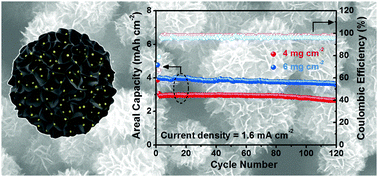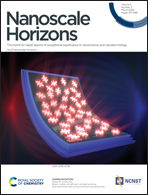Molybdenum carbide nanostructures for electrocatalytic polysulfide conversion in lithium–polysulfide batteries†
Abstract
Introduction of appropriate cathode electrocatalysts in lithium–sulfur or lithium–polysulfide batteries can accelerate the polysulfide interconversion and suppress the shuttle effect. However, improvements are often limited especially under high sulfur loading. Herein, we prepare molybdenum carbide nanostructures and investigate their potential as the cathode electrocatalyst for lithium–polysulfide batteries. The product is prepared by the self-polymerization of dopamine in the presence of Mo7O246− ions, followed by high-temperature carburization. It features ultrasmall α-MoC1−x nanoparticles uniformly dispersed on a hierarchical carbonaceous support. Polysulfide adsorption experiments and electrochemical measurements show that this material has a strong surface affinity toward polysulfides, and can greatly enhance their conversion rate, in particular the Li2S4 ↔ Li2S2/Li2S conversion. When assessed as the cathode electrocatalyst, it enables lithium–polysulfide batteries with large specific capacity (up to 1400 mA h g−1), impressive rate capability (800 mA h g−1 at 3200 mA g−1) and excellent cycling stability even at high sulfur loading.



 Please wait while we load your content...
Please wait while we load your content...